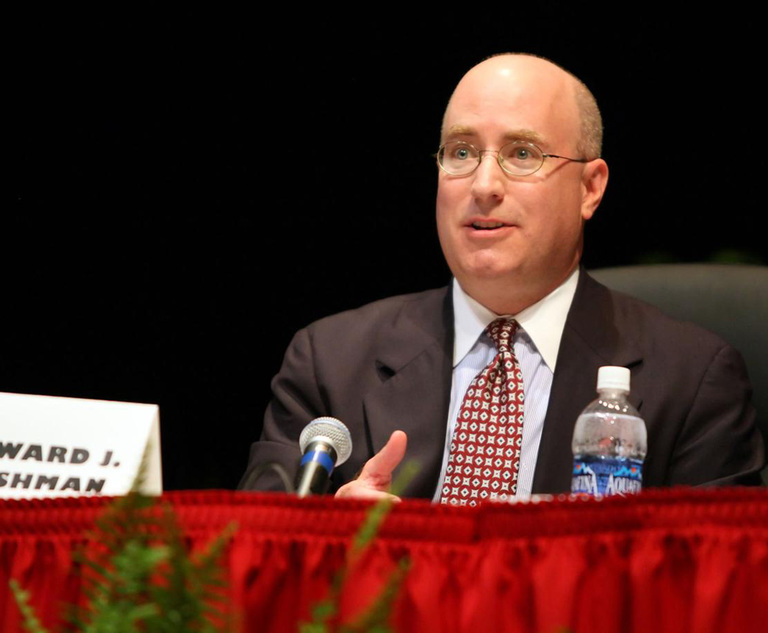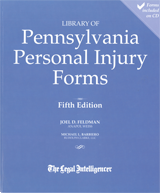Thank you for reading The Marble Palace Blog, which I hope will inform and surprise you about the Supreme Court of the United States. My name is Tony Mauro. I’ve covered the Supreme Court since 1979 and for ALM since 2000. I semiretired in 2019, but I am still fascinated by the high court. I’ll welcome any tips or suggestions for topics to write about. You can reach me at [email protected].
In 2002, when the meaning of the word “blog” needed to be explained to some lawyers and judges, lawyer Howard Bashman launched a blog titled How Appealing.
It was aimed, as you can guess, at the growing appellate law community, including lawyers, professors, journalists, judges and even justices.
Bashman was an appellate lawyer in Pennsylvania, not widely known among the appellate crowd in Washington. The blog took off immediately. When I interviewed Bashman six months after the blog launched, he had received 42,000 page views in a week.
“Appellate lawyers, clerks and judges often say their work is too arcane to talk about with spouses and friends,” I said then. “But in Bashman’s world, they find affirmation that analyzing footnotes and parsing cert grants can actually be fun.”
But the blog was important in many ways too. Judges from around the country would email Bashman, alerting him to a decision that might not be noticed for weeks or months without How Appealing. And even though Supreme Court justices used to say they don’t pay attention to the news media, law clerks and justices were known to take a peek at news stories that Bashman would link to.
In 2012, Justice Elena Kagan told the Sixth Circuit Judicial Conference that she followed How Appealing, as well as the highly watched SCOTUSblog. And visitors to the chambers of Chief Justice John Roberts Jr. noticed that How Appealing was displayed on his computer screen.
In the meantime, Bashman started his own solo appellate boutique, near his home. In 2012, he said the move gave him “freedom to participate in family activities and to serve as an assistant coach on my son’s baseball teams throughout the years.”
Now, 20 years after How Appealing was created, Bashman is still at it, even as other groups like #AppellateTwitter have glommed onto appellate news. Bashman has joined the crowd himself, often using Twitter (@howappealing) to alert readers to his blog.
Marin Levy, a Duke University School of Law professor who sometimes educates about appellate history via Twitter, said of Bashman, “Every day, Howard is providing an invaluable service to lawyers, academics, and judges. And the fact that he has done this for twenty years is nothing short of astonishing. Howard brings together the most important stories about our courts, all in one place, for everyone to easily access. And what’s more, he amplifies those stories over social media.”
We interviewed Bashman on the occasion of his 20th year of How Appealing:
Do you still get feedback from judges and justices?
Yes, I occasionally still receive feedback from judges. Also on occasion, I will receive from a judge an email just making sure I have seen a noteworthy opinion or order that a court has issued.
Has How Appealing been an important part of your practice?
I am fortunate as a solo appellate practitioner to have a thriving practice before the U.S. Court of Appeals for the Third Circuit and the state appellate courts of Pennsylvania. And I attribute that to being well known locally as someone who does good work and achieves good results. My blog has certainly allowed me to get to know and become friends with numerous appellate attorneys and judges from across the country, which has been a very rewarding experience.
What’s your son up to, 10 years after?
My son is now himself a law school graduate (NYU Law) and is working as a business litigator for a law firm located in Wilmington, Delaware. Now that the pandemic appears to be ebbing, we are back to attending Phillies home games on Sunday afternoons this season.
What do you think of #AppellateTwitter?
I think that #AppellateTwitter is wonderful, even if the speed at which journalists who cover appellate courts now operate makes Twitter the first place many people will learn of important, new appellate court rulings instead of at my blog. Some have referred to Twitter as “micro-blogging,” to denote the character limit that Twitter imposes on each tweet. That makes Twitter perhaps a more difficult place to discuss in-depth some appellate topics, which means that there is yet a role to play for the longer posts blogs can offer.
How old are you, and do you expect to keep How Appealing going for another decade?
I am now 57 years old, which still makes me a relative youth compared to folks like you and Lyle Denniston. I don’t think that I will keep blogging as long as Lyle has—since he is still at it even as I am answering your question—but I am also hoping to continue posting to my How Appealing blog into the foreseeable future. What is encouraging about #AppellateTwitter is that it demonstrates that there exists a growing community of appellate practitioners at all levels of their careers, proving that the conversation that the How Appealing blog has been fortunate to participate in will continue far into the future, whether at my blog or elsewhere.
NOT FOR REPRINT
© 2024 ALM Global, LLC, All Rights Reserved. Request academic re-use from www.copyright.com. All other uses, submit a request to [email protected]. For more information visit Asset & Logo Licensing.


 Howard Bashman. Courtesy photo
Howard Bashman. Courtesy photo






